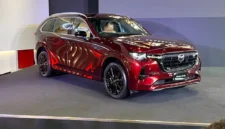BUSINESSWORTH.US – A pivotal strategic decision has emerged from the Japanese automotive titan, Toyota Motor Corporation, announcing a significant delay in the construction of its planned electric vehicle (EV) battery plant in Fukuoka Prefecture. This move, which entails an additional year of evaluation and review, represents a measured response to the tangible global slowdown in EV demand. The postponement is more than just a schedule adjustment; it is a clear reflection of the prevailing caution across the Japanese automotive industry as it navigates the increasingly complex and “cooling” dynamics of the electrification market, departing from earlier “hot” expectations.
Analyzing Toyota’s Decision: A Response to Evolving Market Dynamics
The world’s leading automaker has opted to push back the timeline for its second dedicated battery production facility in Japan, located in Fukuoka. The core focus for the company over the next year will be a comprehensive review and adjustment of the project scope. This prudent approach is directly influenced by widespread reports of a significant deceleration in global EV appetite—a critical factor now shaping the agenda of automotive markets worldwide.
Seitaro Hattori, the Governor of Fukuoka, confirmed the news following his meeting with Toyota President Koji Sato last Friday. Hattori reassured stakeholders that the project has not been canceled. However, the original production start date of 2028 will be deferred. Furthermore, there is an emerging possibility that a portion of the planned capacity could be strategically reallocated toward the production of conventional vehicles or alternative components, illustrating Toyota’s emphasis on strategic flexibility.
In February 2025, Toyota acquired the land in the industrial park in northeastern Fukuoka Prefecture for approximately 6 billion yen (around $39 million). The company remains committed to adhering to the condition of commencing construction within three years of the land purchase, despite the advancement of the project being pushed back.
Sales Deceleration and Revised Targets
Mirroring the general global trend, Toyota’s electric vehicle segment is also contending with declining sales performance and profitability across several key markets. This climate has compelled management to rigorously recalculate the optimal timing for commissioning the new battery plant.
From a financial standpoint, Toyota has revised its global EV sales expectations for the fiscal year ending March 2026, including the premium Lexus brand. The updated target stands at only 277,000 units, a notable 10% decrease from its initial projection made in August. President Koji Sato has even indicated that their ambitious medium-term target of 1.5 million global EVs by 2026 may need formal revision. This cautious outlook is fueled by a decline in consumer purchasing power and a general dip in market sentiment towards EVs across critical markets like the United States, Europe, and Japan.
Regional Strategy and the Strength of the Chinese Market
Despite facing undeniable headwinds and slowdowns in Western markets, Toyota is demonstrating an aggressive and adaptive strategy in China, the world’s largest automotive market, which is now heavily contested by highly innovative local competitors.
1. Swift Action in China: In March 2025, Toyota launched a low-cost EV model, the Toyota bZ3X, specifically tailored for the Chinese market. This maneuver is a clear attempt to expand its customer base and compete directly with local players who offer highly competitive pricing. Toyota’s sales in China saw an increase, rising from 860,000 vehicles in the first half of the 2024 fiscal year to 910,000 vehicles during the same period this year, validating the effectiveness of its localized strategy.
2. Flexible, Localized Strategy: Toyota maintains its ‘multi-pathway’ approach to electrification, customizing its strategy for each specific region. A concrete example is the planned Lexus plant in Shanghai, scheduled to begin operations in 2027. The company is reportedly accelerating its EV technology development in China through collaborations with local technology giants like Huawei, Xiaomi, and Momenta. These partnerships aim to deliver sophisticated electric vehicles leveraging cutting-edge Artificial Intelligence (AI) and next-generation NEV (New Energy Vehicle) platforms. The focus of this collaboration is the deep integration of advanced infotainment systems and AIoT (Artificial Intelligence of Things), making the driving experience smarter and more interconnected.
The Global Phenomenon: Other Japanese Automakers Adjusting Plans
Toyota’s decision is not an isolated incident. Other major Japanese automakers are grappling with similar market conditions, forcing them to re-evaluate their extensive EV and battery investment blueprints:
- Nissan: In May 2025, Nissan canceled its EV battery plant project in Fukuoka, opting instead to focus on a more capital-efficient growth strategy with reduced investment costs.
- Honda: Honda similarly delayed the opening of its planned EV and battery facilities in Canada by approximately two years, citing unfavorable market conditions as the primary reason.
The global market situation has been exacerbated by several key macro factors:
- The End of US Tax Incentives: The cessation of the federal tax subsidy policy for electric vehicles (specifically, the winding down of certain credits towards the end of September 2025) is believed to be a major contributor to the global drop in demand. The removal of these incentives significantly increases the upfront purchase cost for consumers.
- Oversupply and Falling Battery Prices: The previous surge in investment has resulted in an oversupply of EV batteries in the market. Consequently, battery prices are declining, raising concerns that new, large-scale battery plants may struggle to achieve the anticipated profit margins and return on investment.
This delay underscores that the global “EV craze” has now entered a phase of stabilization. Many global brands are retracting their previously “overly optimistic” forecasts for a purely green future and are concurrently broadening their hybrid product lines—a segment where Toyota traditionally holds a distinct competitive advantage.
Table 1: Comparison of Toyota’s EV Targets and Market Realization (Fiscal Year Ending March 2026)
Toyota’s decision to delay demonstrates the prudence of the industry in the face of the cooling momentum of the electric vehicle wave. The non-frenzied global EV demand compels companies to adjust their investment strategies, prioritizing flexibility and an adaptable business model for this new phase of market evolution.
Keywords (SEO-Optimized):
- Electric Vehicle (EV) Slowdown: The core market issue driving the decision.
- Toyota Battery Plant Delay: The specific action taken by the company.
- Fukuoka Factory: The geographical location of the strategic move.
- Global EV Demand: The broader market context and driver of the slowdown.
- Toyota Electrification Strategy: The specific business response and future plans.
- Multi-Pathway Approach: Toyota’s unique technology and market diversification.
- Hybrid Vehicles: The profitable alternative focus during the slowdown.
The Future of the “Middle Way” (Multi-Pathway Strategy)
Under the leadership of Koji Sato, Toyota has consistently championed the ‘multi-pathway’ approach toward carbon neutrality, encompassing Hybrids (HEV), Plug-in Hybrids (PHEV), Hydrogen Fuel Cell Vehicles (FCEV), and pure Battery Electric Vehicles (BEV). The current EV market deceleration inadvertently validates this ‘middle way’ strategy. With Hybrid demand remaining robust and highly profitable, Toyota can secure essential revenue and profits while patiently waiting for EV battery technology (e.g., solid-state) and global market infrastructure to mature. The battery plant delay affords Toyota crucial time for:
- Integrating Next-Generation Battery Technology: This includes solid-state batteries, which promise revolutionary improvements in range and charging speed, potentially resetting the EV market landscape.
- Optimizing Production Costs: Adjusting the scale of production to achieve better break-even points, which is vital given the falling battery prices and fierce competition from Chinese manufacturers.
This strategic adjustment positions Toyota for greater long-term resilience, enabling them to invest wisely, not based on market hype, but on solid, realistic consumer demand and the availability of optimal technology. The postponement of the Fukuoka battery plant, while seemingly a step back, is fundamentally a calculated strategic maneuver to ensure sustainable growth and profitability during the global transition to clean energy.
This delay serves as an epicenter signaling a major shift in automotive industry expectations. From the previous rapid “horse race” toward pure BEVs, the market is now showing greater appreciation for more inclusive, often more affordable, solutions like hybrids. Toyota’s decision reflects a mature stance: prioritizing sustainable development supported by solid market demand, rather than hastily chasing a trend driven by short-term policy incentives.
This is a critical evaluation phase for the entire industry. Manufacturers must be more precise in planning large-scale investments, ensuring that production capacity aligns realistically with consumer adoption rates and global economic realities. Toyota, with this calmly executed delay, has sent a clear message: it will proceed with electrification with meticulous consideration and a flexible strategy, not just speed.












